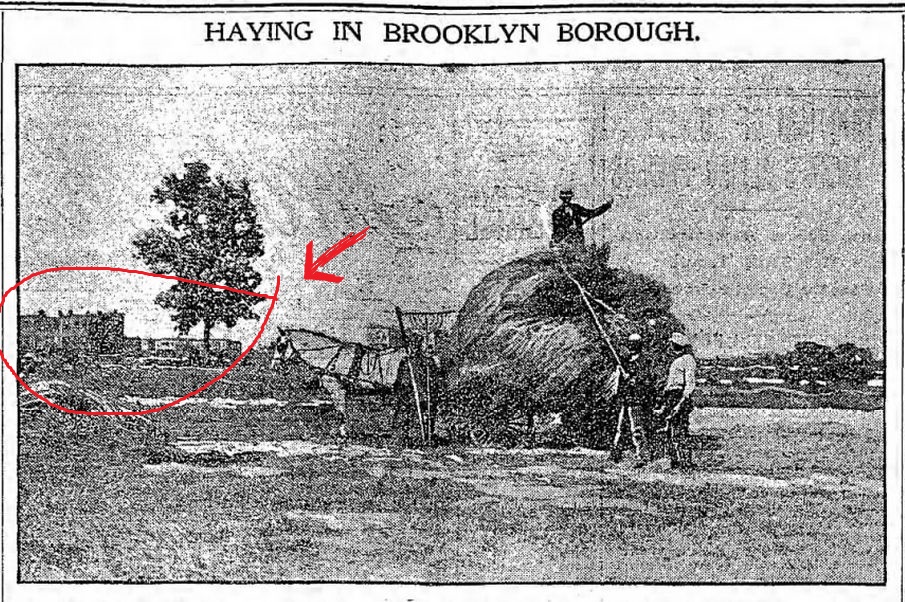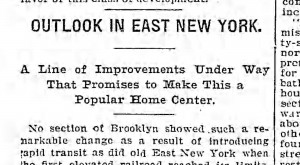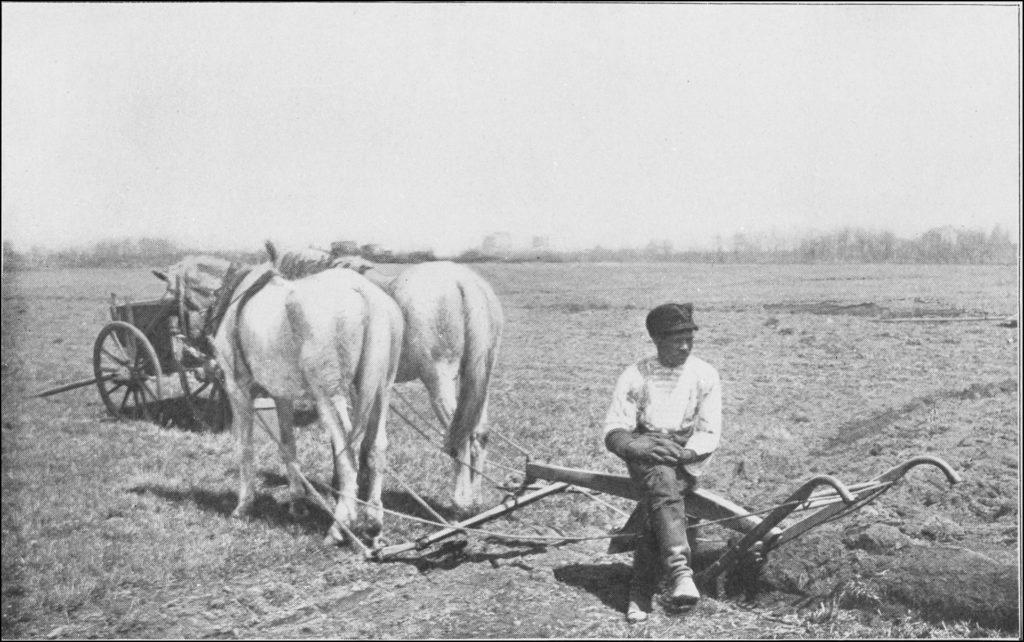A BROOKLYN GENTRIFICATION STORY (1900)

Brownstone Detectives investigates the history of our clients’ homes.
The story you are about to read was composed from research conducted in the course of one of those investigations.
Do you know the history of YOUR house?
********************************************************************************************************************************
(ABOVE: “Haying In Brooklyn Borough” shows farmers haying in the foreground while a row of new brownstones interlope in the background.)
Chances are, if you are sitting anywhere within Brooklyn at this very moment, then you are sitting on what had once been a farm. Brooklyn began existing as farmland in the 1600s and it began to end that existence in the late 1800s and early 1900s.

It was around this time that, in July of 1900, an intrepid Brooklyn Daily Eagle reporter took a trip out to the furthest reaches of Brownstone Brooklyn to see where the confluence of brownstones and farm horses collided.
What he found made great copy.
And it showed a more rustic world that had very recently existed in such neighborhoods as Bed-Stuy, Crown Heights, Prospect Lefferts Gardens, and other sections of the Eastern District (before houses were built there).
The rural district that he trekked was the one that we now refer to as East New York.
HAYING IN EAST NEW YORK
As our reporter walked further and further south along Pennsylvania Avenue, he saw a district filled with streets and lots as far as the eye could see – which ran in this manner all the way down to Jamaica Bay.
Those streets and lots, though, were not passed by shiny streetcars or lined with austere limestone houses. They were still very productive pieces of farmland with very productive horses and farmers.

“Cattle grazing under the eaves of brownstone fronts, corn growing from the cracks between the blocks of a stone pavement or herd grass being cut from city lots and running a ton and a half to the acre, scenes that possess a considerable degree of incongruity and might well be deemed imaginative until one has walked down Pennsylvania avenue of this borough.”
This was where he began to leave civilization and saw farms fighting with brownstone lots to maintain their struggling dominance.
“The herbage growing through the pavement completely hides the cross streets and gives the entire vicinity the appearance of a large farm. Nearly every operation that attends farming is carried on here.”
The reporter who described this scene and the photographer who snapped the shot, knew that these farms were not long for this world. Ever since Brooklyn was mapped with streets in 1839, this sort of life was being erased and replaced with the progress of ordered houses and communities.
TALKING TO THE LOCALS
The farmer our reporter spoke to seemed to sense this. He bemoaned the hardness of this life as his accent was captured (or dramatized) by the reporter.

“Be yew much read up in the Bible?” the farmer asked the reporter.
The visitor replied that his acquaintance with it was purely cursory.
“Wal,” continued the child of the soil, “it ain’t rained here a darned drop all summer. Now the Bible says it rains on the just and the unjust. If that’s so, what in thunder be we?”
The later part of the month would bring more precipitation for the farmer, but the more distant future would bring no relief for his continued existence in East New York.
Within a few short years after this scene played itself out upon nature’s canvas, the scenery that this reporter had observed that day would eventually be replaced with the wood, stone and glass of modern single family houses.
———————————————————————————————————————–
 Brownstone Detectives is an historic property research agency. Our mission is to document and save the histories of our clients’ homes. From our research, we produce our celebrated House History Books and House History Reports. Contact us today to begin discovering the history of your home.
Brownstone Detectives is an historic property research agency. Our mission is to document and save the histories of our clients’ homes. From our research, we produce our celebrated House History Books and House History Reports. Contact us today to begin discovering the history of your home.